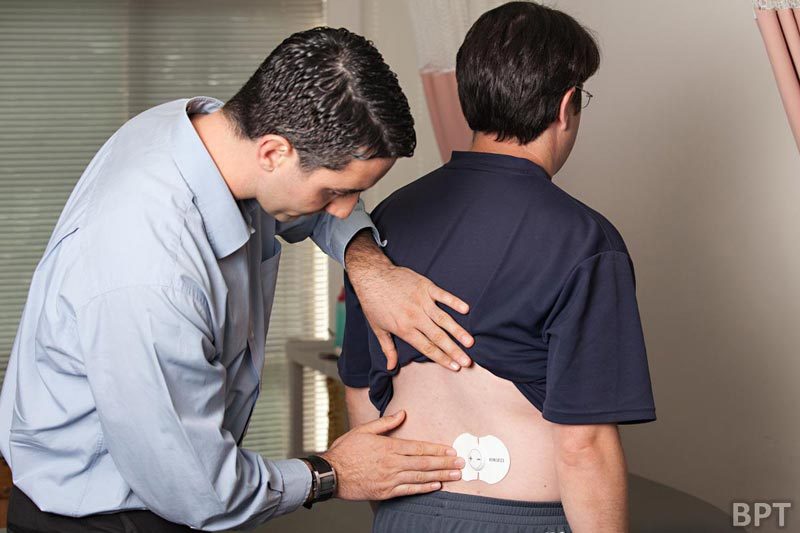Pain is the single leading cause of disability worldwide and one of the main reasons Americans miss work. For example, 31 million Americans experience low-back pain at any given time, according to the American Chiropractic Association, with experts estimating that as many as 80 percent of Americans will experience a back problem at some point in their lives. Meaning it is quite possible you may have symptoms right now.
Dealing with chronic pain in your back, arms or legs can be frustrating and costly. The aches and tenderness can cause you to stop doing the things you love most like playing with your children and participating in your favorite activities, like gardening or golfing, or even doing regular exercise.
“Some people accept lower back pain as a way of life, but it doesn’t have to be that way,” says Brian Elsemore, who has practiced as a registered physical therapist for a decade in Florida and New England. “There are simple things that everyone can do to treat their pain without resorting to drugs or surgery.”
Here are five drug-free steps Elsemore recommends to reduce the pain:
Exercise daily
A body in motion tends to stay in motion, according to Isaac Newton’s laws of motion. This notion applies to the human body and back health as well, so fight the urge to sit or lay for lengthy periods. Exercises that maintain the natural spinal curve and help strengthen the core (abdominals, back and pelvic area) to support the spine are key to eliminating back pain naturally. Even if your back is hurting, increasing blood flow and stretching can help provide relief.
Block the pain signals
Technology called Transcutaneous Electrical Nerve Stimulation (TENS) has been used for decades by health professionals to safely block nerve pain in patients. Now, this clinically proven, drug-free technology is available without a prescription in an affordable, portable device called Rapid Relief Electronic Pain Relief Pad from HoMedics. Simply apply where it hurts and the discreet pad that easily fits under clothing emits a controlled micro-electronic current through the skin to block the nerves from transmitting pain signals to the body’s pain center. The result is fast, effective relief for aches and pains without drugs, creams or messy applications. The device, available in versions calibrated for the lower back as well as the arms/legs, offers 15 levels of adjustable intensity and includes one standard lithium battery, one set of self-adhesive, replaceable gels and a travel storage case. At $29.99, Rapid Relief is one of the lowest cost-per-use topical pain relief options sold without a prescription at CVS, Walgreens, Walmart and Amazon.com. Learn more at RapidReliefPad.com.
Stand, sit and lift smart
Being aware of how you use your back throughout the day is important to reducing lower back pain. When standing, particularly for long periods of time, maintain a neutral pelvic position. Be aware of your posture, keeping the back straight when standing and sitting. Stand up or walk around at least once an hour if you’re job requires long periods of sitting. Hunching and poor posture eventually cause soreness. When lifting – whether a load at work or your child at home – let your legs do the work, according to MayoClinic.com. Additional lifting recommendations include bending only at the knees, holding the load close to your body and avoiding lifting and twisting simultaneously.
Evaluate shoes
It’s common knowledge that fashionable high heels are terrible for back health, but it’s not only stylish shoes that can cause extreme pain. Ill-fitting shoes without proper support can shift a person’s center of gravity, causing him or her to walk out of alignment and put undue pressure on the back. To relieve back pain, only wear supportive shoes that fit well. Keep in mind, shoes should never require a “breaking in” period; if they fit correctly, they should be comfortable right away according to the American Podiatric Medical Association.
Sleep well
Sleep is important for overall well-being, allowing the body to recover from daily activities. Inadequate sleep and back pain go hand-in-hand, quickly creating a vicious cycle. To get a good night’s sleep and encourage pain relief, it’s wise to take a few steps before lights out. Start by placing a pillow under your knees if you sleep on your back or between your knees if you’re a side sleeper – this helps reduce stress on the spine. For a firmer, more supportive mattress, place wood supports between the mattress and base, or place the mattress directly on the ground. If back pain still persists, it may be time to go shopping for a new mattress.
“Lower back pain is so prevalent in our society, but drug-free relief is an option for many people,” notes Elsemore. “From proper exercise and sleep to relieving pain using innovations like Rapid Relief, a few simple steps can dramatically improve quality of life.”
5 Simple, Drug-Free Ways To Reduce Lower Back Pain



